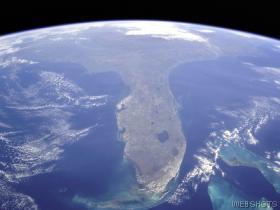Thus,
the extent that Ecological Footprint analysis reflects biophysical
reality it is good news for a better and more secure future.
The bad news is the conventional dream that the human enterprise can
be expanded forever on a finite planet. This expansionist vision
might sound attractive, but it is bound to fail in its current form.
This failure would be very painful. It would hurt the poor first,
the rich later, and all the way along destroy many of our fellow species.
The Ecological
Footprint approach acknowledges that humanity is facing difficult
challenges, makes them apparent, and directs action toward sustainable
living. Admittedly, acknowledging the darker side of the human
condition is sometimes painful – avoidance is sweet temptation.
However, this book takes the position that denial today leads to greater
pain tomorrow. We believe that the first step toward a more
sustainable world is to accept ecological reality and the socioeconomic
challenges it implies. And “business as usual” strategy that
perpetuates today’s destructive lifestyles would be a disservice to
our children.
Mathis Wackernagel
and William Rees
Our Ecological
Footprint: Reducing Human Impact on the Earth, p. 3
Reminder:
Paper 2 is due this class
Reading
Please read Chapters 4
and 5, pp. 125-157 in "Our Ecological Footprint: Reducing Human
Impact on the Earth" and The Earth Charter, March 2000 draft,
available as a handout or at http://www.earthcharter.org/earthcharter/charter.htm
Group Presenting
The task of each group is to teach the
rest of the class about the challenge presented in ", chapters
3-7 of State of the World 2003". Through reading, research ,
and collaborative discussion, you are preparing to present the problem
and possible solutions to the rest of the class.
The following guidelines will help shape
your presentation.
1. Summarize the chapter, what is
the issue?
2. Consider potential solutions or
alternatives.
3. What role might government policy
play in achieving sustainability? How might NGOs become involved
and make a difference?
4. What responsibility should we,
as individuals, take to achieve sustainability related to the challenge
of this chapter? Be thorough and specific. Describe personal actions
we can take.
6. Consider hope. How hopeful are
you that we can meet the challenge of this chapter? Where does your
hope come from?
Using any presentation style you choose
(PowerPoint, skit, lecture, video, traditional lesson, etc.) plan
a 15 minute presentation to teach the rest of us about your research.
You will have time during class four to work together to outline your
presentation and divide responsibilities. All groups will present
during Class Five. We will provide time for all groups to meet with
each other at the beginning of Class Five to prepare.
The presentation will be evaluated by
your instructor and figured into your grade under participation.
This will constitute five percent of the total course grade.
Assessing
Have a look at the syllabus and the
assessment rubric to consider how you are doing . . .are you moving
toward achievement of the course goals? In what ways?
If not, what should you do?
Understanding Floridiana
Remember you are asked to read a work
of Florida literature of your choice. Find a work of your interest.
Feel free to ask your instructor for assistance.
 The
Earth Charter
The
Earth Charter
Ecological
Footprint Calculator
Click on the above
link to access a website that will help you to calculate your own
ecological footprint.
Home Syllabus
Syllabus Introduction
Introduction Required
Texts
Required
Texts Field
Trips
Field
Trips Journal
Writing
Journal
Writing Final
Project
Final
Project
Writing
Papers Weblinks
Weblinks Floridiana
Floridiana Rubrics
Rubrics

 Florida
Gulf Coast University
Official Website 2003
Florida
Gulf Coast University
Official Website 2003

